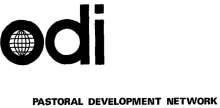Resource information
Ever since colonial administrators and western trained scientists became involved in sub-Saharan Africa in the early 20th century and were faced with the task of governing countries where livestock production was a major economic enterprise, the proper utilisation of rangelands became a major concern. While during most of the colonial era devastating epidemics (like rinderpest and pleuropneumonia) kept the growth of livestock populations in check, during the 1950s and 1960s regional campaigns of eradicating these major cattle diseases created a continuous increase in livestock numbers. It is estimated that between 1963 and 1970 annual growth of cattle populations averaged 2.8%, but slowed down to 1.25% per annum during 1970 to 1980 (Antenneh 1984).While up to the 1950s constraints of feed shortages for livestock were outweighed by those of disease, concern over looming imbalances between supply and demand of grazing resources led to large investments in projects of water development, many of which were financed by foreign aid. This provision of water to hitherto underutilised grazing lands further stimulated herd growth, but at the same time encouraged more settled modes of production and reduced mobility. While watering rights of man-made traditional wells were tightly enforced and served as a control on over-exploitation, water sources that were publicly financed were open to all, breaking the age-old equilibrium between water and rangeland use (Sandford 1983, Swift 1984).The need for establishing criteria and ways for determining the carrying capacity of African rangelands became more strongly felt when in the 1960s and 1970s several regions were hit by droughts (1960 to 1961, 1973 to 1976 in East Africa; 1969 to 1973, 1979 in West Africa) causing enormous stock losses.This paper investigates common approaches to determine carrying capacity, elucidates the problems associated with applying the concept in sub-Saharan Africa, and suggests ways of broadening the concept to improve its applicability in this continent.



